How to make an easy béchamel sauce recipe
Bechamel sauce is the basis of many different sauces, so I thought it was about time to share with you this easy basic recipe for this creamy sauce. Once you have mastered making a basic bechamel sauce, there is a world of sauce waiting for you!

Making béchamel sauce
To make bechamel sauce, you need no more than three simple ingredients. All purpose flour, butter and cold milk and some salt and pepper to season. Bechamel is often used like this with lasagna, for example, but you can also turn it into a curry sauce, mushroom sauce or a cheese sauce, for example. Just to name a few of the possibilities.
This white sauce recipe, a classic in the kitchen, was invented in the sixteenth century by chefs at the French court.
Soon the recipe for this sauce became the basis of countless other creamy sauces, with all sorts of additional ingredients being added to a bechamel sauce. It’s definitely one of the most versatile sauces.
Today, you can buy the basis for béchamel sauce ready-made in sachets, but the tastiest thing is still to make this basic sauce yourself.
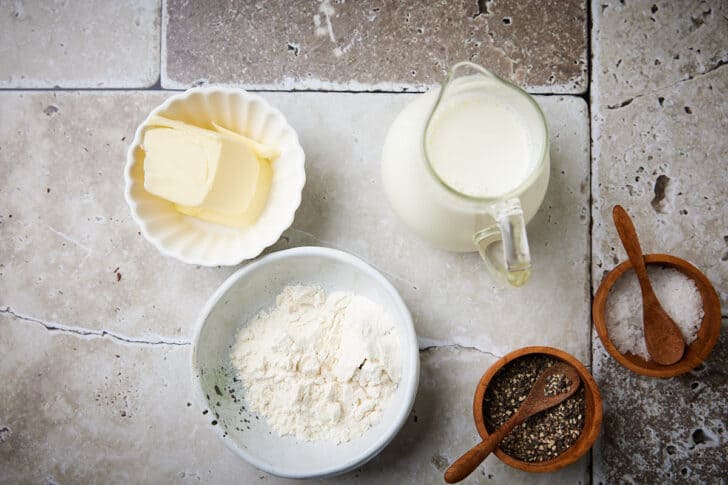
The ratio I use to make the sauce is basically always the same. You take a piece of butter (50 g) and melt butter gently on low heat in a small or medium saucepan. When the butter is melted you add the same amount of flour. Mix this with the butter while stirring with a wooden spoon and cook the flour for while. You have now made a white roux.
Make sure not to burn the flour. So keep the heat low and stay with it. Stirring with a wooden spoon is easiest, but you can use a whisk if you want.
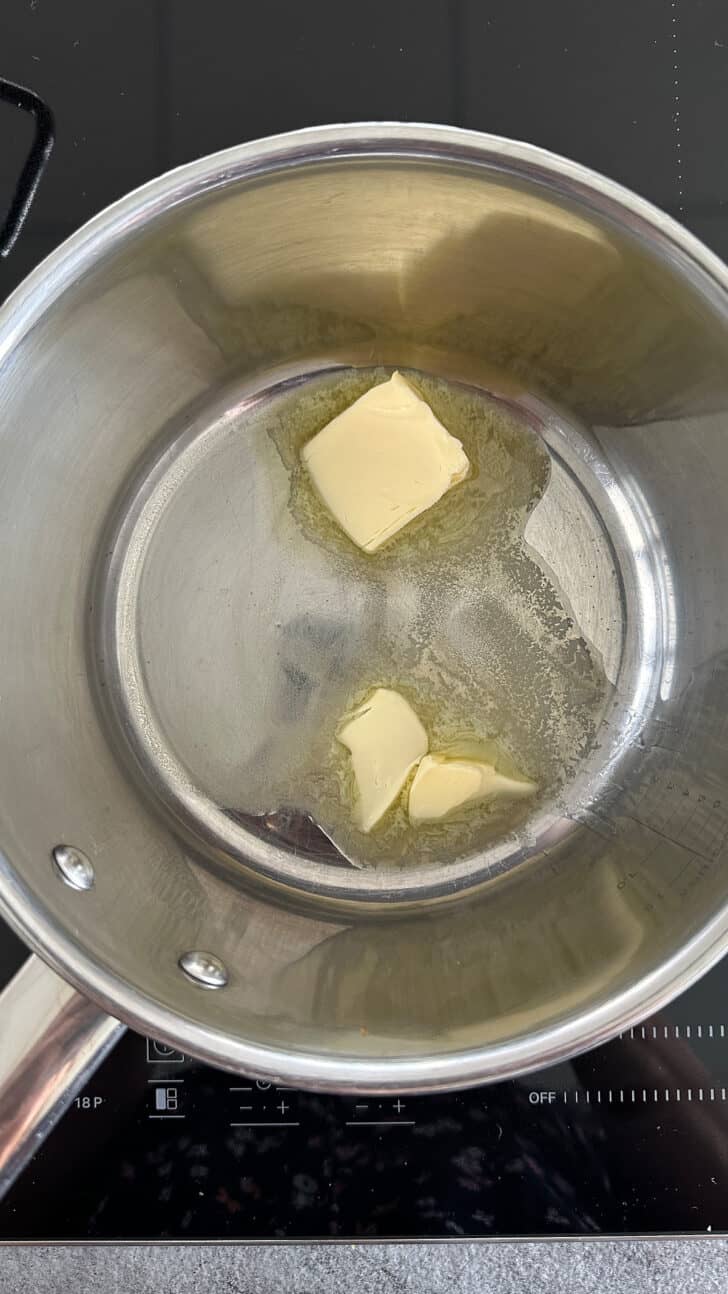
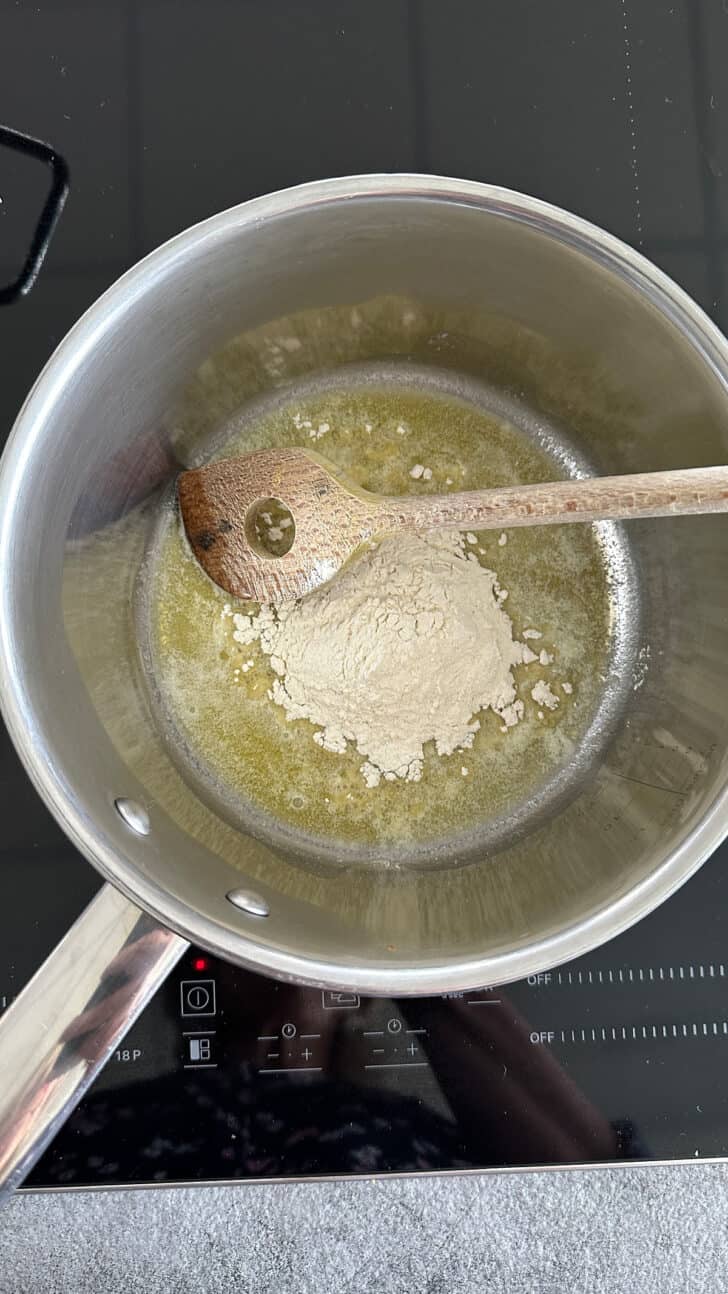
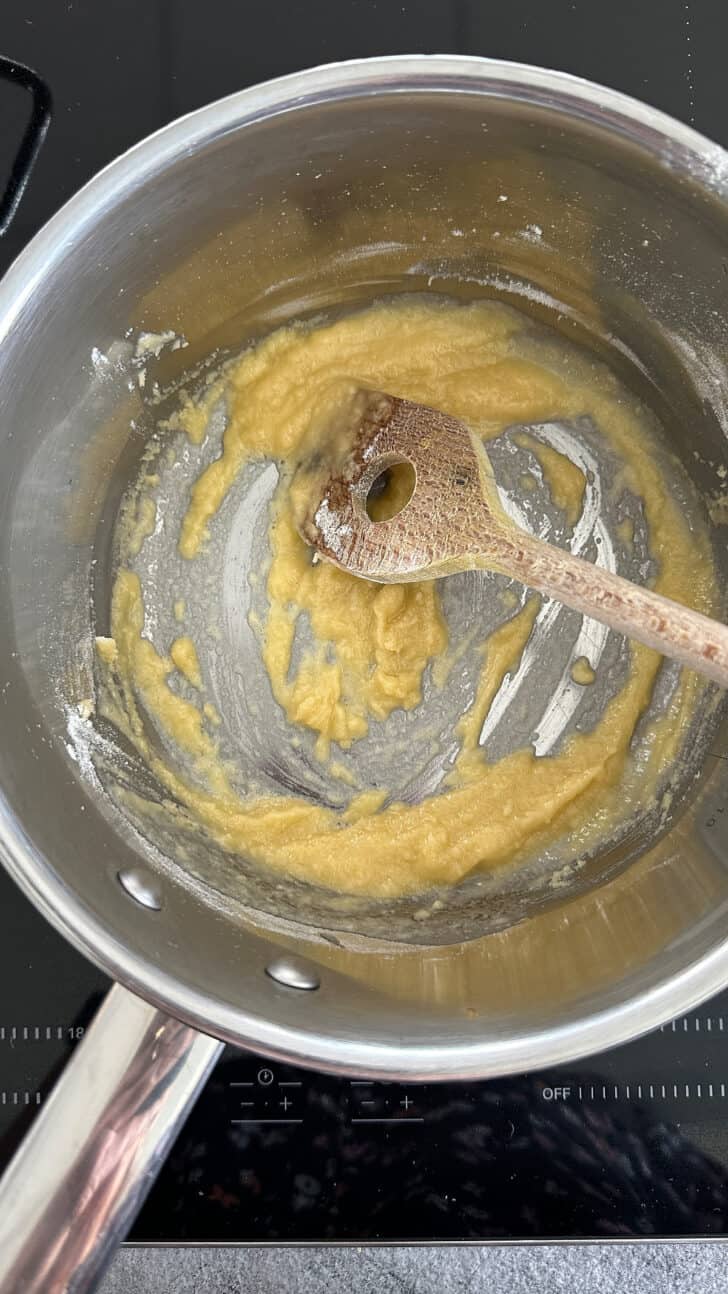
Add milk
The next step in making the bechamel is to add the milk. Always use whole milk for this. It’s not that it’s impossible to make with skimmed or semi-skimmed milk, but for the tastiest end result (and a bechamel sauce is allowed to be nice and creamy) use whole milk. Or you could use heavy cream to make it even richer.
You add the milk in portions. First add a splash of milk to your butter/flour mixture. You will see that it thickens almost immediately, so stir until well incorporated and then add another splash. On a quantity of 50 g butter and 50 g flour (4 tablespoons of flour), you need about 500 ml of whole milk (that will be 2 cup of milk) for a nice thick basic white sauce. Thinner is easy by adding some milk.
If you are making a cheese sauce, for example, you will want the bechamel sauce to be a little thinner because the cheese itself thickens the sauce considerably. But I am getting ahead of myself. If all the milk has been absorbed by the sauce, let it boil down a little more.
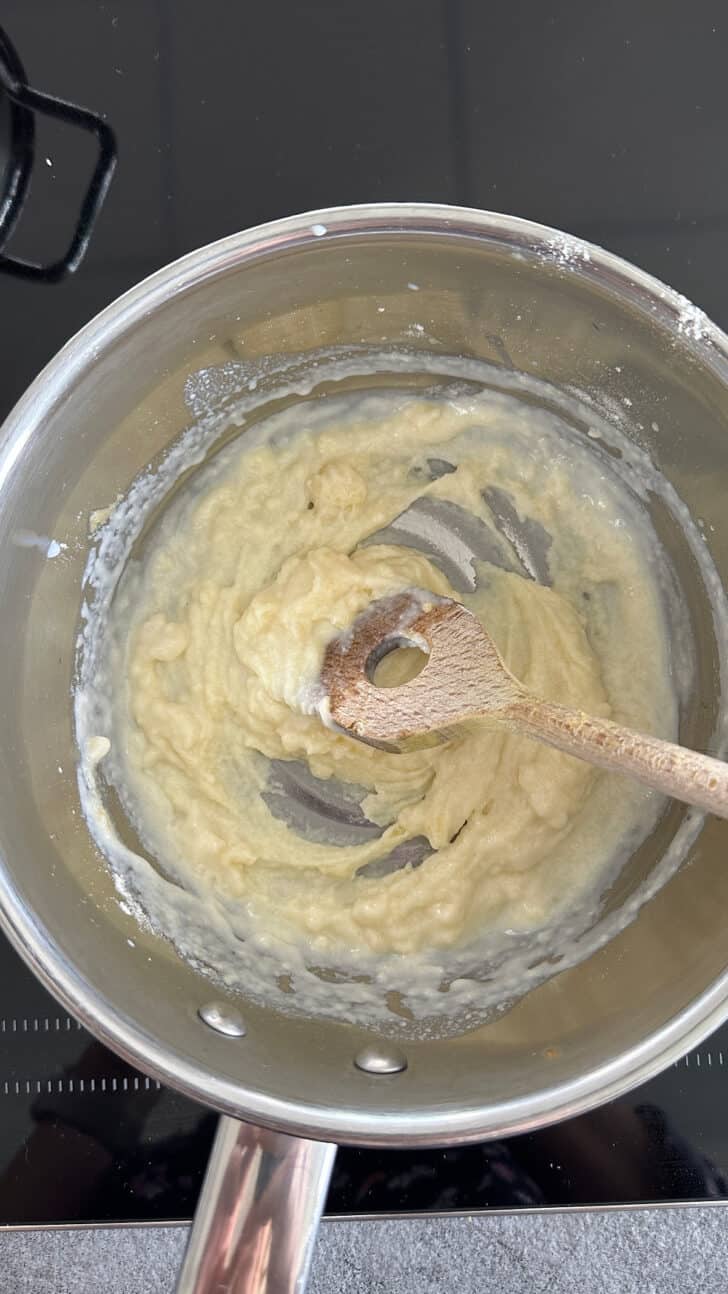
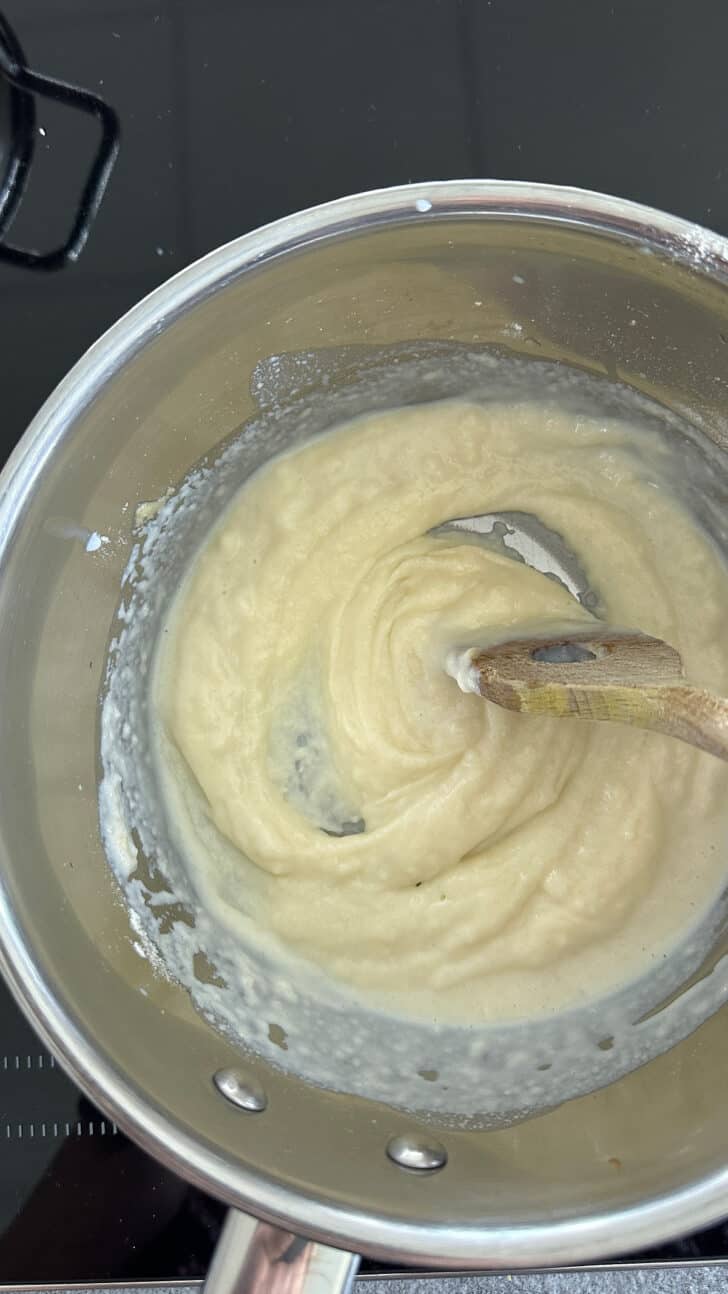

Thickening the béchamel sauce
If you’ve added all the milk you can increase the heat to medium heat and gently bring the sauce to a boil. It doesn’t have to boil vigorously, small bubbles on a gentle simmer is fine. You will see that it thickens easily after a few minutes. If it coats the back of a spoon you know it is done. The flour will now do its job and you will get a creamy béchamel sauce. Season with a bit of black pepper and a little salt and you’re good to go.
What can you do with béchamel sauce?
As I mentioned above, it is the basis of many other sauces and can be used on a variety of dishes. But classic béchamel au naturel is also a delicious sauce to use. You can use it over vegetables, for example. My mother used to always make plain béchamel for over cauliflower. At the time I had no idea what it was but now you do! And now it has become one of my favorite recipes.
It’s also the basis for a nice creamy lasagna, Greek moussaka and many other casseroles and pasta dishes. This classic french mother sauces is also used on a croque monsieur and well, too many other dishes to count.
Can you keep béchamel sauce?
Yes and no. If you store the béchamel in – for example – the refrigerator, it thickens and becomes a bit lumpy. If you want to use it again for something afterwards, you have to reheat it and probably also add extra milk to make it smooth again. It’s more convenient to incorporate it into a lasagna, for example, and then store it in the refrigerator. You can do that.
If you use the sauce for over vegetables then it is more convenient to make the sauce fresh. And because it’s so quick and easy, that’s also not a whole lot more time than reheating it and making it smooth. If you made too much you can freeze it. Make sure to use a freezer-safe container and the best way to reheat is to do that in the microwave. Or let it thaw and rehydrate when needed.
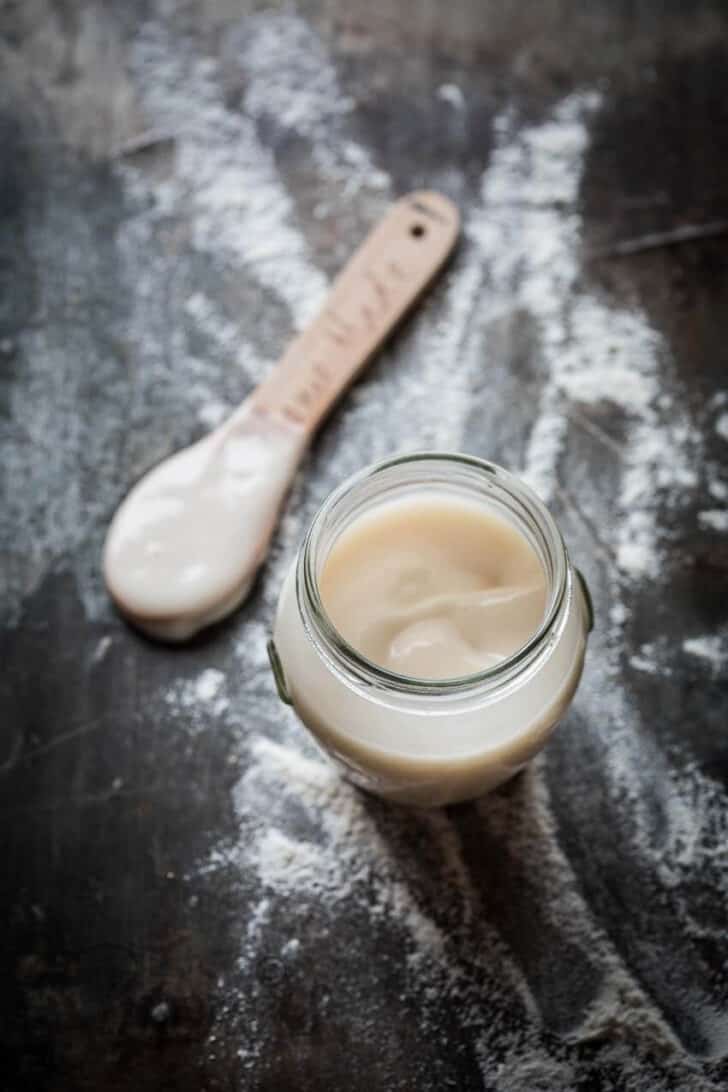
How do you prevent lumps in your béchamel sauce?
If you have lumps in your béchamel sauce, then you probably didn’t stir well enough. At first I use a wooden spoon, but when there is more liquid in the pan I usually switch it to a whisk. After each addition of liquid, make sure you stir well so that any lumps are dissolved. You do not want a lumpy sauce. Also make sure to scrape along the bottom of the pot. Alternatively you can strain it through a sieve to remove any unwanted irregularities. You want a nice smooth sauce and a perfect texture.
My béchamel sauce is too thin
If you’ve added too much liquid to your bechamel sauce, you can dissolve it again by adding some cornstarch to your sauce. Mix 1 tsp cornstarch with a little liquid to a smooth paste. Add this to your bechamel and stir until it thickens. If it is still too thin, repeat the process.
I’m planning to make a paleo version of this simple white sauce using maybe coconut milk and an alternative to the flour and using coconut oil instead of butter. Not sure what will happen if I do but I think it will be an interesting experiment.
You can find the full recipe in the recipe card below.
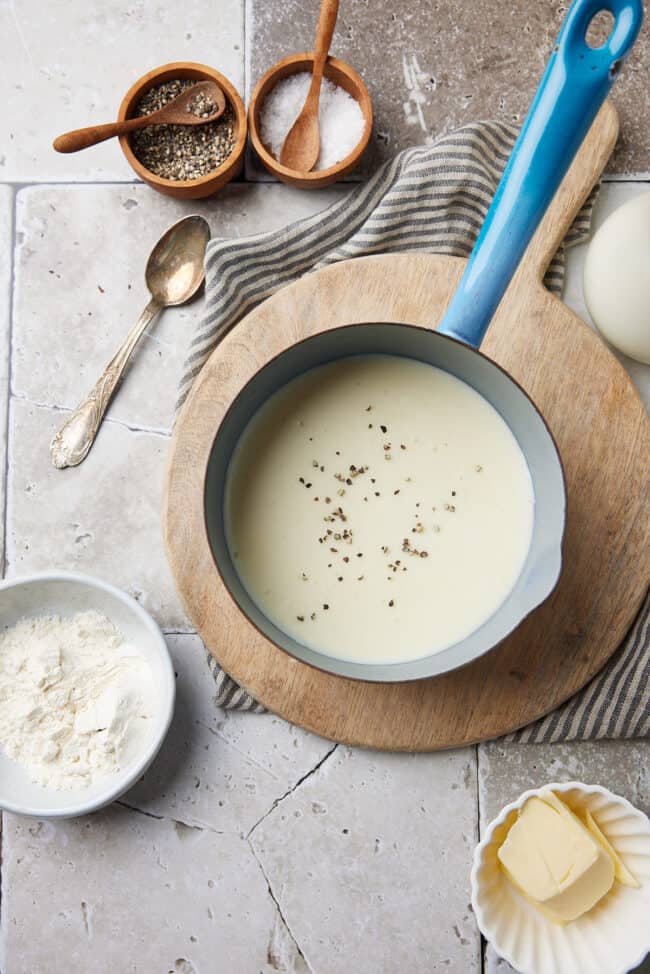
Bechamel sauce
- Take a small saucepan and put it on low heat with the butter. Melt the butter and now add the flour.
- Fry the flour for a while (make sure it doesn’t burn!) so that the flour is cooked.
- Now add the milk little by little. If the mixture is still thick, use a wooden spoon to stir. If it becomes thinner you can switch to a whisk. This is easier to remove lumps.
- Continue until all the milk is used up or the sauce has reached the desired thickness. Season to taste with salt and pepper.
Nutrition Information per portion
Disclaimer
The nutritional values above are calculated per portion. The details are based on standard nutritional tables and do not constitute a professional nutritional advice.
